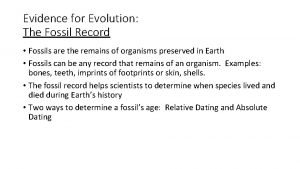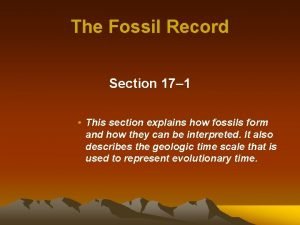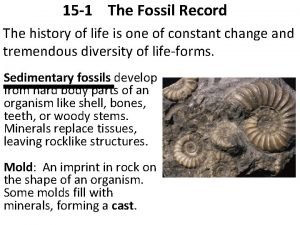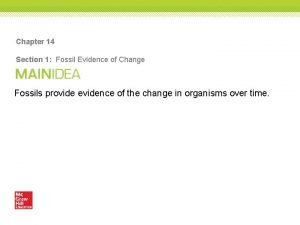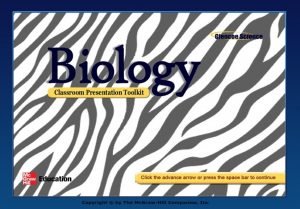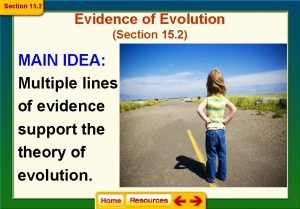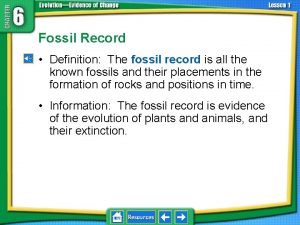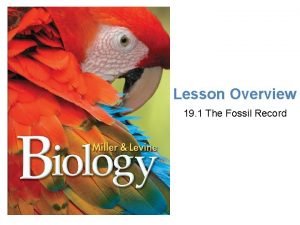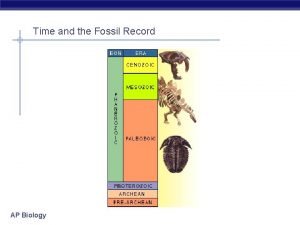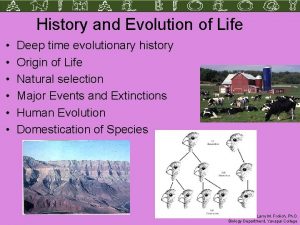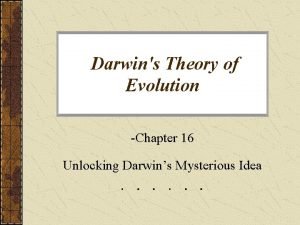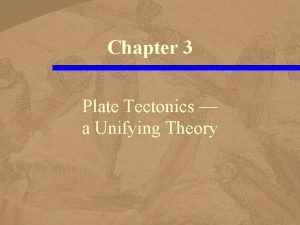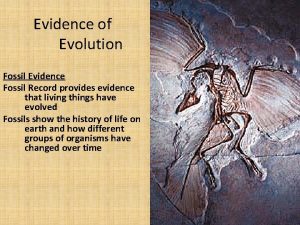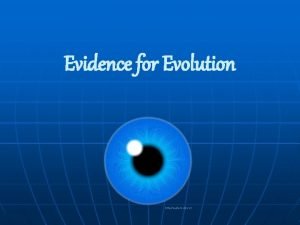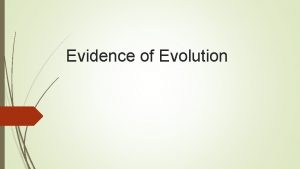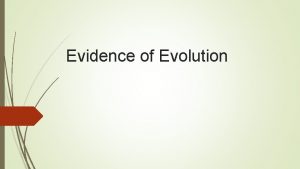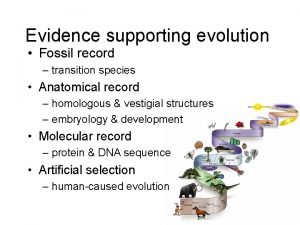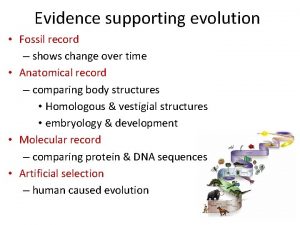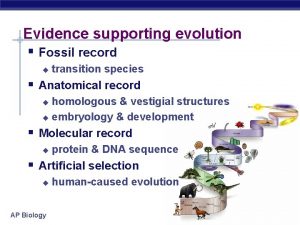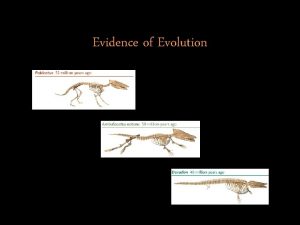Evidence Supporting Evolution Section 14 2 Fossil Record











- Slides: 11

Evidence Supporting Evolution Section 14. 2

Fossil Record to Support Evolution Preserved remains or markings left by organisms Most fossils are found in sedimentary rocks Younger rock layers usually are layered on top of older ones (Law of Superposition) Positions of fossils in the rock strata can reveal their relative age The fossil record provides evidence of Earth's changing life

Law of Superposition Diagram Where would the fossils be the youngest? Where would the fossils be the oldest?

Geographic Distribution Differences and similarities between organisms in different parts of the world. These observations suggested to Darwin that today's organisms evolved from ancestral forms. Geographic distribution of organisms serves as a clue to how modern species may have evolved

Similarity in Structure Certain similarities in structure among species provide clues to evolutionary history Forelimbs of all mammals consist of the same skeletal parts (homologous structures) evolution is a remodeling process (“descent w/ modification”) Vestigial structures: homologous structures that have a major function in one species but are not important in a related species

Cont Section 14. 2

Similarities in Development Embryos of closely related organisms often have similar stages in development Called Embryology Ex. All vertebrates have an embryonic stage when pouches appear on the sides of the throat Yet, the similarities of these structures during development support other evidence that all vertebrates evolved from a common ancestor.

Molecular Biology If two species have genes and proteins with sequences that match closely = sequences must have been inherited from a relatively recent common ancestor. The greater the number of differences in DNA and protein sequences between species = less likely they share as close a common ancestry. See Fig. 14 -16

This table shows the results of a comparison of the amino acid sequences of hemoglobin in humans and other vertebrates.

Using DNA to Identify Relationships Between Species Organism 1 2 3 4 5 DNA Sequence ABCDEFG Abcdef. G ABCDEf. G ABCdef. G Draw a flow chart showing how these organisms relate to each other. Place the common ancestor (1) at one end and move outward.

Concept Check 14. 2 1. Why are older fossils generally in deeper rock layers than younger fossils? 2. How can evolutionary theory explain why Australia is home to relatively few native placental mammals? 3. What are homologous structures? 4. What can you infer about species that differ significantly in their DNA sequences?
 How are fossils evidence for evolution
How are fossils evidence for evolution Section 17-1 the fossil record
Section 17-1 the fossil record Section 15-1 review the fossil record
Section 15-1 review the fossil record Chapter 14 section 1 fossil evidence of change answer key
Chapter 14 section 1 fossil evidence of change answer key The history of life section 1 fossil evidence of change
The history of life section 1 fossil evidence of change Evidence of evolution section 15-2 review
Evidence of evolution section 15-2 review Fossil record defintion
Fossil record defintion What is the “fossil record”?
What is the “fossil record”? Fossil record definition biology
Fossil record definition biology Fossil record
Fossil record Darwin viewed the fossil record as
Darwin viewed the fossil record as Fossil and mountain chain evidence
Fossil and mountain chain evidence
